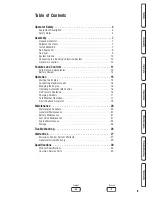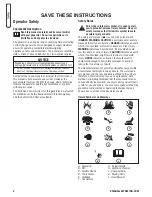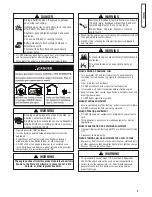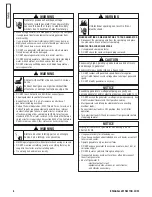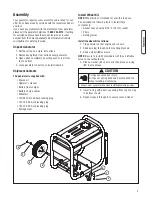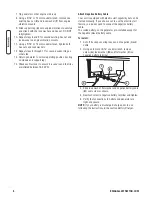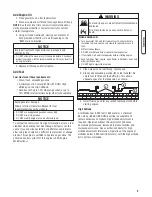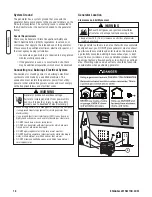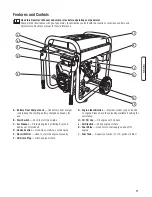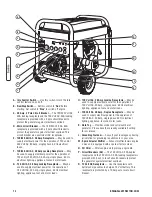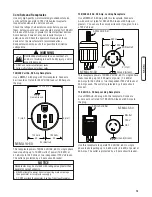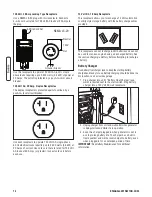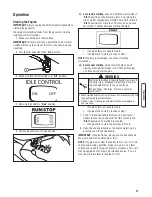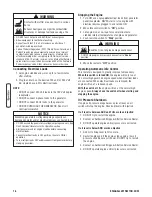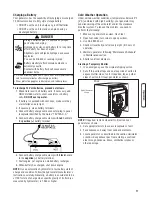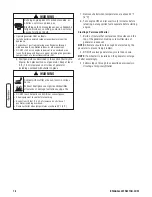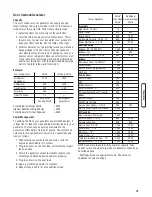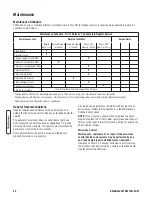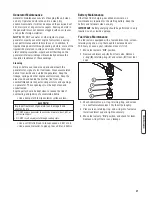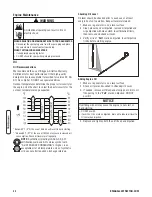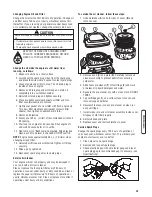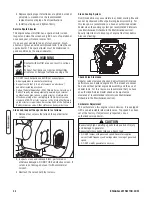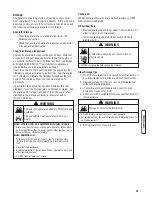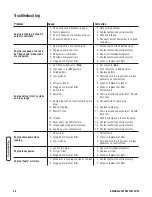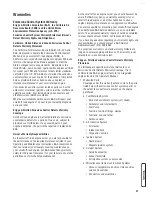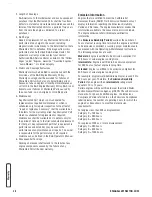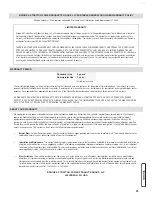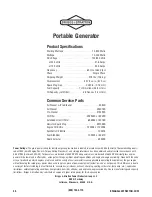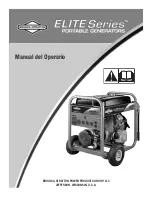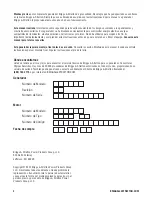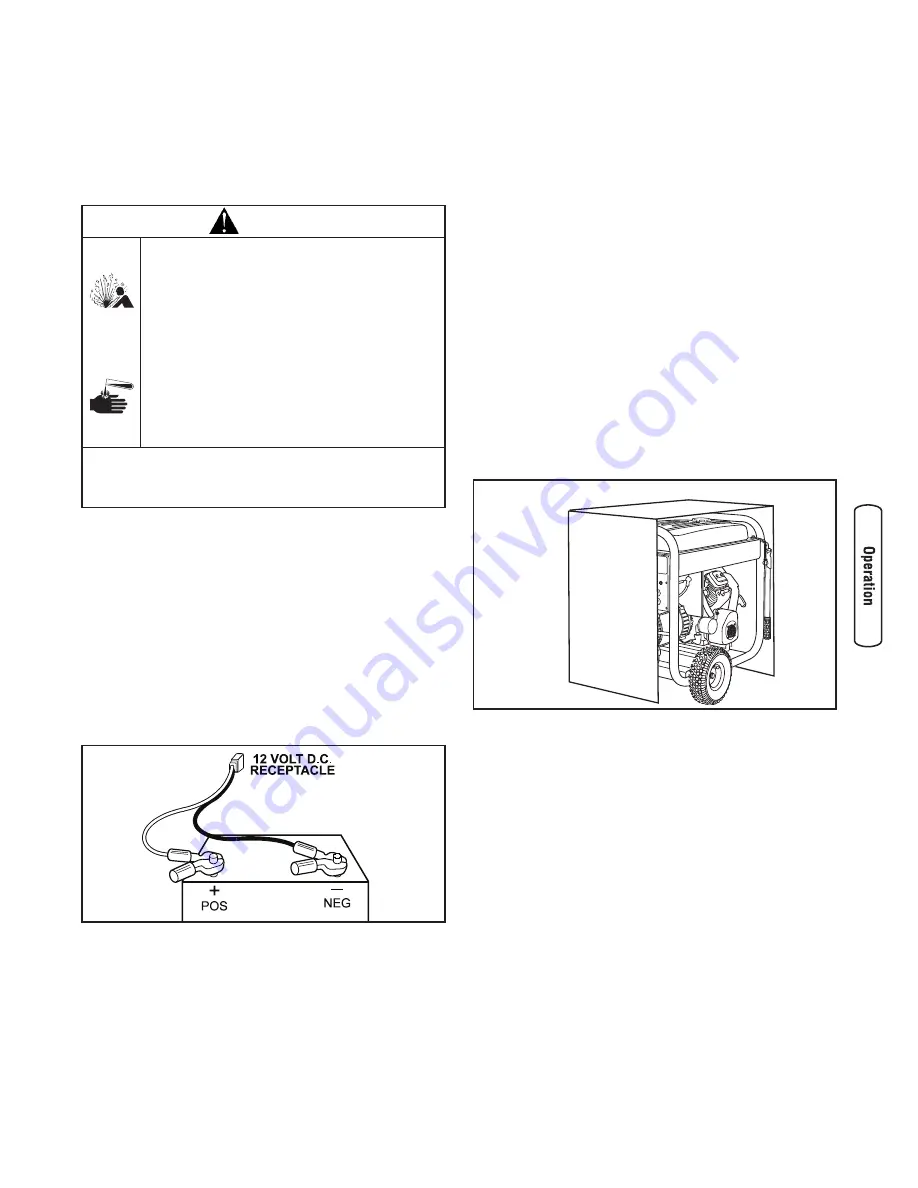
17
Charging a Battery
Your generator has the capability of recharging a discharged
12 Volt automotive or utility style storage battery.
• DO NOT use the unit to charge any 6 Volt batteries.
• DO NOT use the unit to crank an engine having a
discharged battery.
To recharge 12 Volt batteries, proceed as follows:
1. Check fluid level in all battery cells. If necessary, add
ONLY distilled water to cover separators in battery
cells.
DO NOT use tap water.
2. If battery is equipped with vent caps, make sure they
are installed and are tight.
3. If necessary, clean battery terminals.
4. Connect battery charge cable connector plug to panel
receptacle identified by the words “12V 10A D.C.”
5. Connect battery charge cable clamp with
red
handle to
the
positive (+)
battery terminal.
6. Connect battery charge cable clamp with
black
handle
to the
negative (–)
battery terminal.
7. Start engine. Let engine run while battery recharges.
8. When battery has charged, shut down engine
NOTE:
Use an automotive hydrometer to test battery state of
charge and condition. Follow the hydrometer manufacturer’s
instructions carefully. Generally, a battery is considered to be
at 100% state of charge when specific gravity of its fluid (as
measured by hydrometer) is 1.260 or higher.
Cold Weather Operation
Under certain weather conditions (temperatures below 40°F
[4°C] combined with high humidity), your generator may
experience icing of the carburetor and/or the crankcase
breather system. To reduce this problem, you need to
perform the following:
1. Make sure generator has clean, fresh fuel.
2. Open fuel valve (turn valve to open position).
3. Use SAE 5W-30 oil.
4. Check oil level daily or after every eight (8) hours of
operation.
5. Maintain generator following “Maintenance Schedule”
in
Maintenance
section.
6. Shelter unit from elements.
Creating a Temporary Shelter
1. In an emergency, use the original shipping carton.
2. Cut off top carton flaps and one long side of carton to
expose muffler side of unit. If required, tape up other
sides of carton to fit over generator as shown.
NOTE:
If required, remove wheel kit to fit carton over
generator as shown.
3. Cut appropriate slots to access receptacles of unit.
4. Face exposed end away from wind and elements.
5. Locate generator as described in the section
Generator
Location
. Keep exhaust gas from entering a confined
area through windows, doors, ventilation intakes or
other openings.
DANGER
Storage batteries give off explosive hydrogen
gas during recharging.
Hydrogen gas stays near battery for a long time
after battery has been charged.
Slightest spark will ignite hydrogen and cause
explosion.
You can be blinded or severely injured.
Battery electrolyte fluid contains acid and is
extremely caustic.
Contact with battery fluid will cause severe
chemical burns.
• DO NOT allow any open flame, spark, heat, or lit cigarette during
and for several minutes after charging a battery.
• Wear protective goggles, rubber apron, and rubber gloves.
Wind
Typical Generator
Shown

